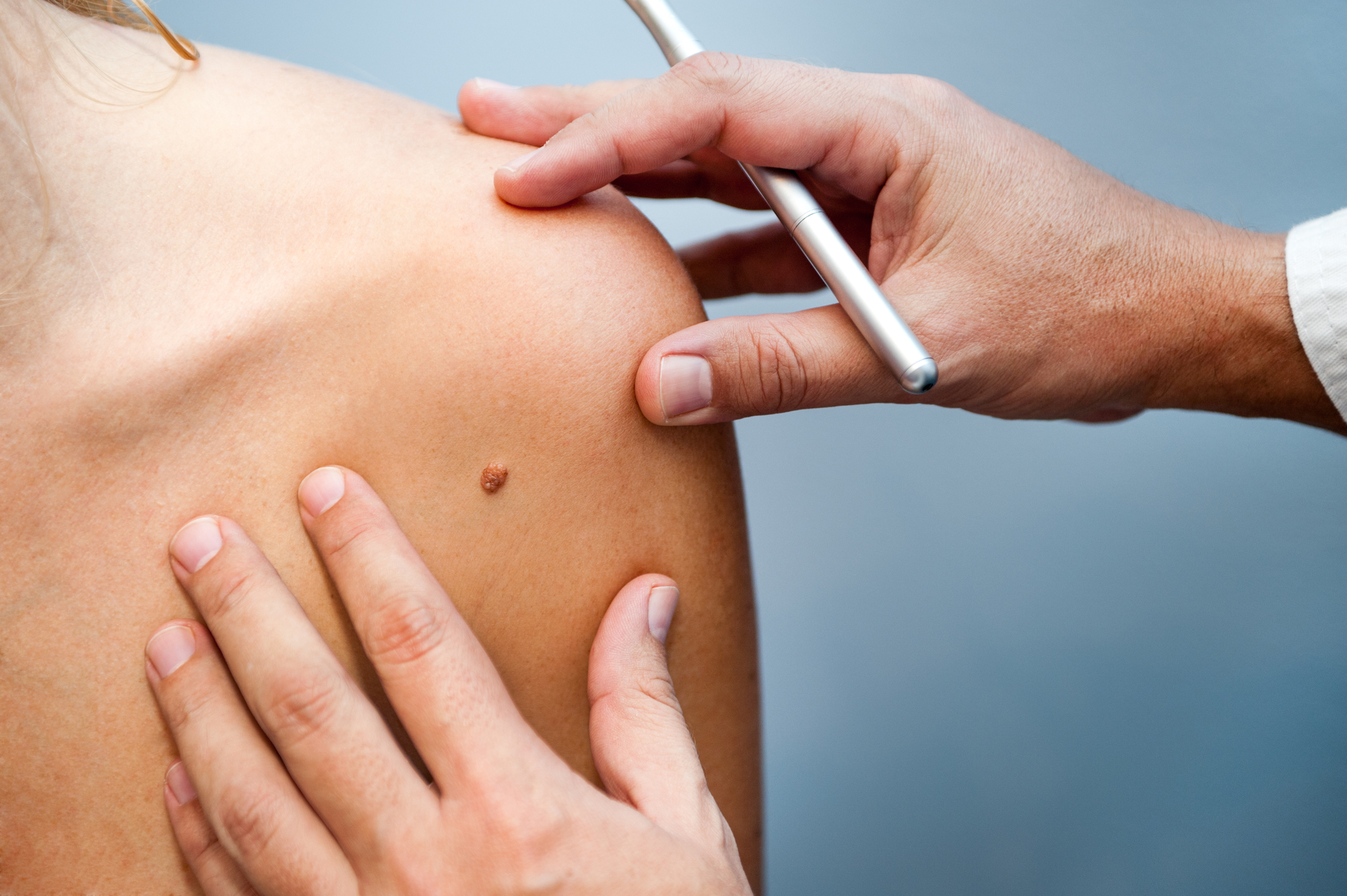

Moles, like their furry homonyms, should be roughly round, brown, and symmetrical. When they start changing, something could be very wrong. But it’s not just existing moles you should keep an eye on.
When it comes to skin cancer, the advice most people get is to keep an eye on their moles for changes. Is the border getting wiggly? Are there raised portions? And was that strange purplish-black bit always there? But it turns out that most melanomas—about 70 percent—come from new spots rather than existing moles. That’s what a new study in the Journal of the American Academy of Dermatology found by looking at 38 studies of melanoma. There have been wildly varying numbers for just how many cases of cancer arise from moles in the past, so this meta-analysis offers a more accurate estimate since it’s averaging many results.
Melanoma is just one type of skin cancer—it’s the least common, but the most deadly. And it’s easily preventable. Apart from the standard advice to always wear broad spectrum sunscreen and avoid sunburns, here’s what to do:
Remember the ABCDs of melanoma
Every dermatologist uses roughly the same metric to determine whether a mole is concerning. They’re easy to remember, so use them when you check yourself and others:
- A: Asymmetry
- B: Border, which should be smooth, not irregular or lumpy
- C: Color, should be just one, and definitely not red or blue or white
- D: Diameter, which should be less than 6 millimeters (roughly the width of a pencil eraser)
Use that guide, and if anything seems out of the ordinary go see a dermatologist. They’ll be better equipped to tell you whether the spot has to be removed.
Don’t trust that you’ll notice when a new mark appears
It’s difficult to notice gradual changes on ourselves. You look at yourself in the mirror every day, so unless a boil erupts in an obvious spot overnight, you’re unlikely to realize that something is happening. It’s far more probable that you’ll spend a day in the sun, and then along with a lovely tan you’ll develop a few freckles. Maybe one of those freckles evolves into something…more than a freckle. It’s easy to see that spot every day and never make a mental note about it. That’s why we have dermatologists.
Many people end up at the dermatologist only when they’ve found something truly concerning. The reality is that we could prevent a lot of skin cancer deaths if we all saw our doctors regularly. If caught early enough, most melanomas are curable. It’s when the cancer gets a chance to grow and spread to other parts of the body that it becomes a serious threat.
A dermatologist can help prevent that growth by checking your entire body for potentially dangerous spots on a regular basis. They’ll document your skin with photos—yes, they might be unflattering—and comparing the photos over time. Every spot gets photographed and noted on a map of your body, such that any new growths are easy to identify. It might feel slightly awkward sitting in a quiet room, naked, as someone examines your body up-close for about half an hour. But if they find a precancerous spot and remove it before it becomes a cancerous one, that awkwardness will be worth it.
Get a friend or partner to help you look
Bits of the body that get regular sun exposure are, perhaps counterintuitively, less likely to develop melanomas. Your face builds up a tan and a tolerance to UV radiation, so most people don’t get terrible sunburns there. Your back, on the other hand, usually doesn’t get much exposure on a daily basis since work- and school-appropriate clothing covers it up. During a swimsuit-clad trip to the pool or beach, that area gets a ton of exposure that it isn’t used to. Without proper precautions, that can result in a painful, peeling burn. The more sunburns like that someone gets in a lifetime, the higher their risk of melanoma.
When skin peels, it’s because the cells on top are so damaged by the UV radiation that they’re dying. And it’s that damage that causes melanoma.
The trouble is that melanomas developing on your back are much more difficult to see. But it’s easy enough to ask for help. Let’s be honest—most of us don’t do any of the checks that doctors recommend. Women should check their breasts for lumps and men should check their testicles. Who really does, though? Who stands in the mirror checking for new freckles, much less asks someone else to? “Hey honey, could you check my back for new skin growths?” is not a sexy question. But if you’re fair-skinned and tend to burn, it could be well worth the few awkward minutes.
Keep an eye out for changing moles
Even though most melanomas come from new spots, that doesn’t mean you should ignore the old ones. 30 percent of melanomas still arise from existing moles, and it can be easier to notice when a previously small spot is turning into a lumpy, discolored mess.
Whether a new mole, or a change in an older mole, too many people wait to go see a doctor until something is seriously wrong. The good news is that by going earlier rather than later, you’re far more likely to catch it before it becomes cancerous. Dermatologists remove precancerous moles all the time. The whole process can take less than 15 minutes and a few tiny stitches on an area that has been helpfully numbed for the procedure. And getting a small chunk of skin removed is a lot less scary (and much less expensive) than chemotherapy.